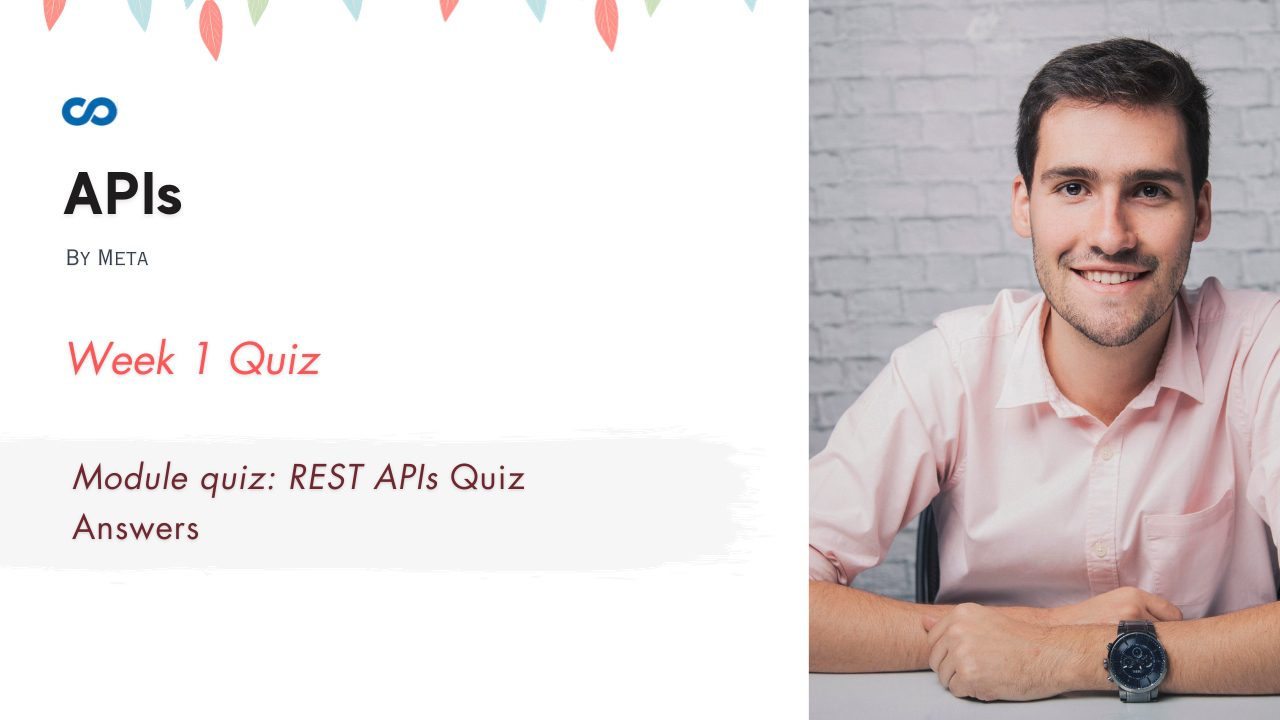Module quiz: REST APIs Quiz Answers
In this article i am gone to share Coursera Course: APIs by Meta Week 1 | Module quiz: REST APIs Quiz Answers with you..
Also visit: Final graded quiz: APIs Quiz Answers
Module quiz: REST APIs Quiz Answers
Question 1)
What are the benefits of using pipenv? Choose all that apply.
- It manages the dependencies
- It makes your project run faster
- It makes your project more secure
- It creates a virtual environment for your project
Question 2)
What is the default port number used by Django webserver?
- 8001
- 8000
- 443
Question 3)
What does the following command do?
python manage.py startapp
- It creates a Django project
- It creates a new Django app
- It installs Django
Question 4)
Authentication and authorization are the same thing.
- True
- False
Question 5)
Which of the following HTTP status codes are used to indicate client-side and server-side errors? Choose all that apply.
- 503 – Service Unavailable
- 404 Not Found
- 301- Moved Permanently
- 403 – Forbidden
- 201 – Created
Question 6)
What are the valid Accept headers for requesting XML content? Choose all that apply.
- application/xml-content
- application/xml
- text/xml
- application/x-xml
- code/xml
Question 7)
What can lead to data corruption in an API project? Choose all that apply.
- Lack of caching
- Lack of authorization
- Lack of authentication
- Lack of throttling
- Lack of data validation and sanitization
Question 8)
Which of the following statements are valid for Insomnia? Choose all that apply.
- It’s a REST API Client
- Insomnia can send different types of payloads
- Insomnia has a mobile client
- Insomnia has a command line tool
- Insomnia is cross-platform
Question 9)
Which of the following API clients/tools has both web and desktop versions?
- Postman
- Insomnia
- Curl
Question 10)
What is the purpose of renderer classes in DRF?
- Convert model instance to native Python data types
- Convert serialized data to display as HTML, XML and JSON
- Quickly scaffold a CRUD API project

